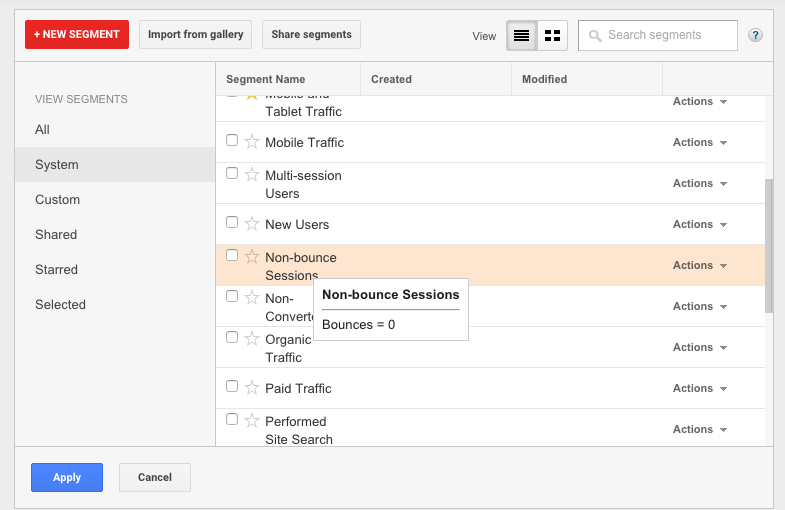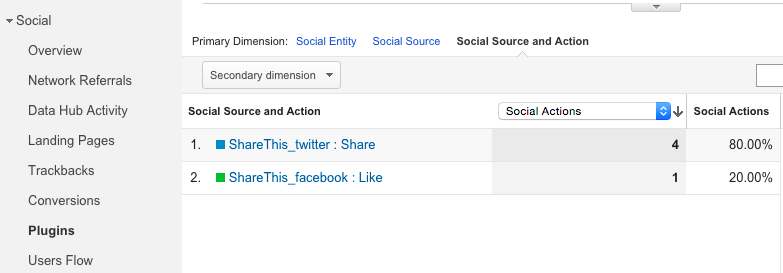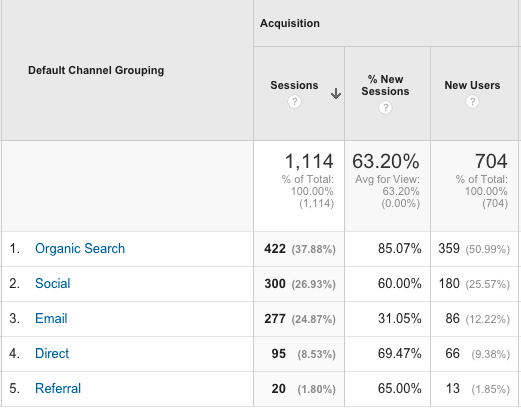The Rocky Horror Picture Show celebrated 40 on September 26 and its cult following created a ritualized script for audience participation. The experience was easy to measure. It was visible. Toilet paper was thrown. But in the digital world, if you want your audience doing the Time Warp then your content strategy must be more than producing content. You need engagement, and ways to measure it. Get these Google Analytics reports…

Can you believe it? The Rocky Horror Picture Show celebrated 40 on September 26. When the film’s early cult following started interacting with the screen, these talkback lines became a ritualized script for audience participation. And the show became an experience. Participation was easy to measure. It was visible. Toilet paper was thrown. But in the digital world, if you want your audience doing the Time Warp then your content strategy must be more than producing content. You need engagement.
Everybody talks about engagement, but what does it really mean? Basically, do your visitors give a hoot about what’s on the page? Here’s how you can tell if they are participating.
They read and then take action.
- They Stay: Visit another article, follow an internal site link, download
- They Talk Back: Comment, contact
- They Tell Others: Like, share, pin, recommend, link to
- They Come Back for More: Return to the site, sign up, follow
Below are my tips on tracking engagement in Google Analytics.
Q1: Do they read?
Metric: Bounce Rate, Average Pages per Session, Time on Site
Where to find it: Google Analytics standard reports. Audience > Overview shows each of these top-level metrics. Additionally the Behaviour > Site Content > All Pages report will show you the Bounce Rate for any given page on the site.
Go pro: Use Event Tracking to see how far visitors scroll down the page and track if visitors play video content on your site.
More info: Bounce rate is a useful, yet easily manipulated metric. I recommend reviewing the Kissmetrics infographic that explains Bounce Rate. The graph includes a helpful section on how bounce rate varies by industry and website type.
In my experience, publisher sites commonly report bounce rates between 40-60%
Source: https://blog.kissmetrics.com/bounce-rate/Q2: Do visitors take action?
They Stay: Visit another article, follow an internal site link, download
Metric: Page Depth
Where to find it: Audience > Behaviour > Engagement
Go pro: Use an advanced audience segment like Non-bounce Visits, which is available in Google’s pool of built-in segments, to extract only the traffic to your site that was engaged enough to view a second page.
Reports like Behaviour > Behaviour Flow can help you visualize the common paths visitors take as they move from page to page.
Additionally, the Behaviour > Site Content > All Pages report can be used to provide a navigation summary for a particular page of interest. For example, if you have a popular blog post, click on that page in the All Pages report, then view the Navigation Summary tab to see the common entrance points and next pages.
Also, actions like downloading a related resource can be tracked using Events.
They Talk Back: Comment, contact
Metrics: Conversions related to successful form submission
Where to find it: Your content management system may have an easy way for you to see the number of comments and the associated blog posts or URLs.
Go pro: Tracking comments and contact forms can be done with event tracking and set up via Google Tag Manager.
They Tell Others: Like, share, pin, recommend, link to
Plugins that help visitors Share or Pin content will provide their own metrics but social tracking can be set up with Google Tag Manager as well if you are comfortable with some code. There are various ways to track social interactions and the above link is just one way. Google’s standard Social reports can also provide insights.
Metric: Social Network Referrals, Social Plugins and Referrals
Where to find it: If you use social interactions and plugins that make it easy for users to Like, G+, Share on Twitter, Pin, etc. then those social interactions can be viewed via Acquisition > Social > Plugins. Change the primary dimension to Social Source and Action for details.
Social Networks referring traffic to your site can be viewed via Acquisition > Social > Network Referrals, or Acquisition > All Traffic > Referrals.
The Social > Network Referrals report organizes the shared content by Social Network (i.e., Facebook, Pinterest) and clicking the network will then display what URLs were shared.
The All Traffic > Referrals report shows the source (i.e., facebook.com, pinterest.com) and clicking the network will then display the referral path.
Go pro: View either of these reports and use “Secondary Dimension” to display additional data. For example, if you are viewing the Social Entity (shared URL) then add Full Referral as the secondary dimension to see the source of the shared URL.
They Come Back for More: Return to site, sign up, follow
Metric: New vs Returning visitors (or users)
Where to find it: Audience > Behaviour > New vs Returning or look at Behaviour > Frequency and Recency to see the distribution of sessions and the number of days since last session.
Also, standard reports show % New Sessions and New Users which is helpful for seeing what sources or channels send more first-time visitors.
Go pro: Apply the advanced segments for New and Returning Visitors to any standard report to better understand the behavioural differences between these two visitor types. And use event tracking to record exit clicks to your social media profiles and goal tracking to record successful newsletter signups.
#ThrowbackThursday Let’s do the time warp again!







